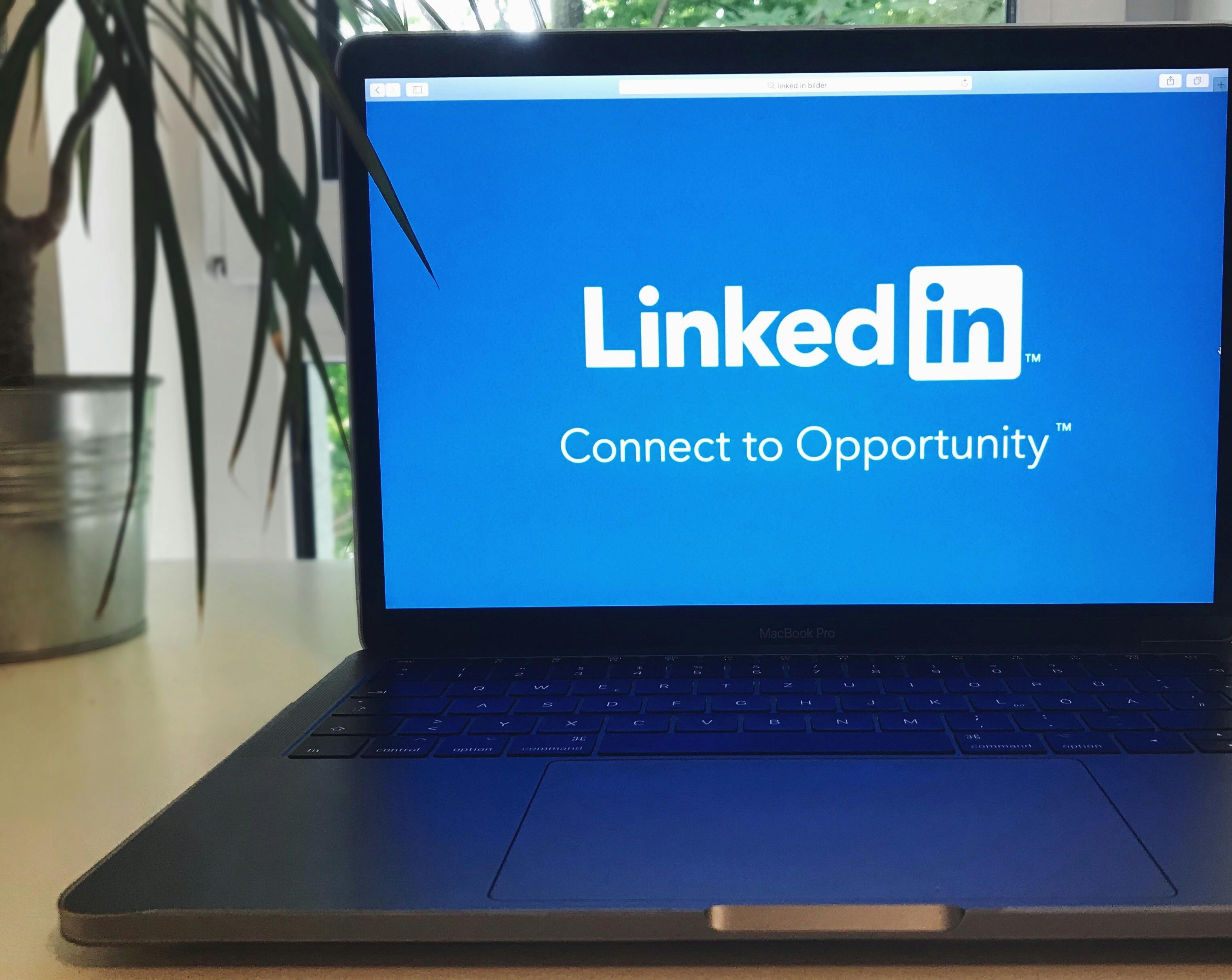Lead Generation
How to Generate Leads and Boost Your Business Growth
Boost business growth with effective lead generation strategies. Connect with the right audience, nurture prospects, and convert leads into loyal customers.
Feb 13, 2025

Getting people interested in what you offer is just the start. Turning that interest into real action—like signing up, scheduling a call, or making a purchase—is where the magic happens. That’s why generating leads is such a big deal. It’s not just about numbers; it’s about finding the right people who genuinely connect with your product or service.
Think about it. Every potential lead is someone who could become a loyal customer, but they need the right nudge at the right time. Whether it’s through engaging content, special offers, or simply understanding their needs, the way you attract and guide leads can make all the difference. If you’re looking to grow your business and build lasting relationships, mastering lead generation is a must. Let’s dive into how you can make it work for you.
What Is Lead Generation?

Lead generation is the process of attracting potential customers to your business by sparking their interest in your products or services. This involves collecting contact details, such as email addresses or phone numbers, from interested individuals who can later be nurtured into purchasing customers. For B2B companies, which often deal with high-cost products or services, lead generation plays a pivotal role in connecting qualified prospects with your sales team.
Types Of Leads
Not all leads are created equal, as they differ in their level of interest and sales readiness. Understanding the types of leads helps you prioritize your outreach efforts.
Marketing Qualified Leads (MQLs)
MQLs are prospects who engage with your company's marketing activities but aren’t quite ready to commit to a purchase. These individuals may, for example, download an ebook, fill out a webinar signup form, or subscribe to your newsletter. MQLs signal interest and benefit from additional nurturing through tailored content and campaigns.
Sales Qualified Leads (SQLs)
SQLs are leads that are considered ready to speak with your sales team. These prospects often meet predefined criteria, such as budget, authority, need, and timeline (BANT). For instance, someone requesting a price quote or a product demo would likely qualify as an SQL.
Product Qualified Leads (PQLs)
PQLs emerge from prospects who’ve tried your product in a limited capacity, such as through a free trial or freemium model. Their direct interaction with the product indicates a stronger likelihood of conversion, provided the trial experience resonates with them.
Service Qualified Leads
These leads are prospects explicitly expressing interest in upgraded offerings or consulting services. For example, a customer reaching out to request advanced features or premium support packages falls into this category.
Each type of lead requires a different approach in terms of follow-up strategies, content, and sales alignment.
Techniques For Generating Leads
Deploying diverse lead generation strategies increases your ability to target prospects effectively.
Cold Email Campaigns
A well-structured cold email can open doors to meaningful business conversations. Personalizing the email content, addressing your prospect's pain points, and keeping a clear call-to-action increases the chances of engagement.
Content Marketing
Creating valuable content, such as blog posts, whitepapers, and videos, helps attract prospects to your website. Optimizing content for SEO ensures better visibility in search results. High-quality resources that address your audience's challenges enhance credibility and nurture leads.
LinkedIn Outreach
Leveraging LinkedIn for targeted marketing is effective for B2B lead generation. Optimizing your LinkedIn profile, participating in industry-specific groups, and sending tailored messages to decision-makers facilitate connections. Coupled with strategic follow-ups, it’s an ideal channel for building trust in professional contexts.
Webinars And Events
Hosting webinars or participating in industry events engages your audience directly, offering insights while positioning your business as an authority. Collecting attendee details during these activities converts participants into actionable leads.
Lead Magnets
Offering freebies such as ebooks, templates, or calculators in exchange for contact information draws visitors into your sales funnel. Ensure the lead magnet aligns with your audience’s specific needs to encourage sign-ups.
Best Practices For Successful Lead Generation
Applying best practices refines your lead generation efforts, improving overall results.
Define Your Audience Clearly
Pinpoint your target demographics and understand their behaviors, preferences, and pain points. Accurate audience profiling ensures your campaigns resonate and attract the right leads.
Use Multi-Channel Outreach
Combine channels like email, social media, and paid ads to reach a diverse set of prospects. A holistic approach provides multiple touchpoints, boosting the likelihood of conversion.
Invest In Automation Tools
Tools for automating emails, tracking user behavior, and managing campaigns save time and enhance productivity. They streamline follow-ups and ensure no opportunities slip through the cracks.
Track And Analyze Data
Continuously measure metrics such as click-through rates, conversion rates, and lead quality. Analyzing performance data helps refine strategies and focus on high-impact practices.
Incorporating these techniques and best practices into your lead generation strategy ensures a steady flow of high-quality prospects, setting the foundation for sustainable business growth.
The Lead Generation Process

Generating leads requires a structured approach to convert potential interest into actionable outcomes. By following the right steps, you can streamline this process and create a steady pipeline of qualified prospects ready to engage with your business.
Identifying Your Target Audience
Understanding your audience is vital to any lead generation strategy. Define who you're trying to reach by creating detailed buyer personas. These profiles should include demographics, pain points, purchasing behaviors, and goals. For example, if you're targeting B2B executives, focus on their industry, company size, and decision-making challenges.
Use tools like Google Analytics, CRM data, or surveys to refine your audience insights. If you're starting fresh, consider observing competitors or using platforms like LinkedIn to identify patterns in your ideal customer base. A clearly defined audience allows you to tailor your messaging and lead generation efforts more effectively.
Attracting Visitors And Capturing Leads
Once you know your audience, direct them to your website or landing pages using content and campaigns that align with their interests. Blogging, SEO, and paid ads can drive traffic, but the real key is converting visitors into leads.
Add lead magnets like free eBooks, white papers, or exclusive webinars to your site. For instance, offering a free trial or demo for your software often entices visitors to share their contact details. Use compelling CTAs (e.g., "Download Now" or "Get Your Free Trial") and ensure they lead to optimized landing pages with user-friendly forms.
Consider live chat and chatbots to engage visitors in real time. These tools can answer questions, offer additional information, or even collect contact details—perfect for immediate connection before a visitor leaves.
Qualifying And Nurturing Leads
Leads differ in readiness to purchase. Some are just exploring options, while others are ready to act. Separate marketing-qualified leads (MQLs) from sales-qualified leads (SQLs) by examining their actions. A lead who downloads your case study and subscribes to your email list might be an MQL, while one who requests a demo can be classified as an SQL.
Use email campaigns and personalized outreach to nurture MQLs further down the sales funnel. Share industry insights, how-to guides, or testimonials relevant to their needs.
Converting Leads Into Customers
When nurturing steps are complete, focus on sales processes that close the deal. For SQLs, provide personalized proposals or schedule one-on-one consultations to address specific concerns. Time your follow-ups carefully; ensure leads are approached at a stage where they're ready to commit. Including urgency in your offers, such as limited-time discounts, often enhances conversion rates.
Track progress using CRM software to measure which leads convert and optimize strategies accordingly. Similarly, using analytics tools can help you identify bottlenecks in the process, from lead capture to final purchase.
By executing each stage of the lead generation process attentively, you'll not only increase the volume of your leads but also improve the quality, ultimately driving higher conversions and fostering business growth.
Effective Lead Generation Strategies
Generating leads is all about connecting with the right people through the right strategies. It involves understanding your audience, engaging them with value, and guiding them toward your offerings. Below are key tactics to consider for driving high-quality prospects to your business.
Search Engine Optimization (SEO)
SEO improves your website's visibility on search engines by optimizing its content, structure, and keywords. By targeting relevant search terms, you attract visitors actively searching for solutions that align with your offerings. For example, using keywords like "B2B lead generation techniques" or "cold email best practices" can help you rank for high-intent queries from prospective leads.
Creating SEO-friendly content, such as blog posts and resource pages, is crucial. Use tools like Google Keyword Planner to identify terms your audience frequently searches. Additionally, ensure your site is fast, mobile-friendly, and contains descriptive meta titles and headers. Each improvement strengthens your search rankings, ensuring your business gets discovered.
Content Marketing
Content marketing involves producing valuable materials such as articles, videos, eBooks, and infographics that resonate with your audience. This strategy builds trust and positions you as an authority in your industry. For instance, publishing a step-by-step guide on "cold email outreach tactics" can attract professionals seeking actionable advice.
To optimize results, align your content with your audience's challenges. Write informative blog posts answering common questions, such as "How to generate B2B leads cost-effectively?" Share this content on high-traffic platforms, including niche forums and LinkedIn groups, for extended reach. High-quality, consistent posting not only engages prospects but also nurtures long-term relationships.
Email Marketing
Email marketing is a powerful way to directly reach and engage with leads. Well-crafted campaigns break through noise and compel recipients to take action. For instance, designing a sequence of cold emails with personalized subject lines and tailored content can increase responses.
Segment your email list based on customer preferences or behavior to deliver relevant messages. For example, one group might receive emails focused on appointment-setting benefits, while another gets insights on creating effective cold email campaigns. Incorporate clear calls-to-action (CTAs) such as "Book a demo" to guide recipients down the sales funnel.
Social Media Engagement
Social media allows you to meet potential customers where they are and builds credibility through regular interaction. Platforms like LinkedIn are especially effective for B2B lead generation. Share industry updates, thought leadership articles, or case studies, and actively participate in discussions.
Join relevant LinkedIn groups or communities where decision-makers gather. For example, engaging in comments on posts by C-Suite professionals can help build visibility. Use tools like social listening to identify trending discussions in your niche and contribute strategically, driving traffic back to your profile or website.
Hosting Webinars And Online Events
Webinars and online events allow you to connect with your audience in real-time while showcasing your expertise. For example, hosting a session on "Effective Cold Email Strategies for B2B Sales" attracts professionals interested in actionable takeaways.
Market your event through email newsletters, social media, or partnerships with influencers in your industry. During the event, include interactive elements like polls or Q&A sessions to foster engagement. Follow up with attendees by sharing a recording of the webinar and a CTA to set up a consultation, converting interest into solid leads.
Leveraging Referrals And Partnerships
Referrals and partnerships enhance lead generation by tapping into established networks. Current customers often trust recommendations from peers, making referrals a powerful strategy. Encourage satisfied clients to refer others by offering incentives, such as discounts or exclusive perks.
Collaborate with complementary businesses to share leads and expand your prospects. For instance, an appointment-setting agency could partner with a CRM provider to offer bundled services. Companies like Growleady specialize in forging meaningful connections through tailored cold outreach, making partnerships easier to navigate. Use these synergies to boost your reach and credibility.
Tips To Improve Your Lead Generation
Creating a strong lead generation strategy involves multiple tactics, each tailored to capture, nurture, and convert leads effectively. Implementing personalized campaigns, optimizing your website, using analytics, and continuously testing your approach ensures you maximize results.
Personalize Your Campaigns
Tailor your campaigns based on your audience's preferences and needs. Segmentation lets you divide your email or marketing lists into smaller, focused groups. For instance, segment leads by demographics, buying behavior, or industry. Use personalized subject lines in cold emails to grab attention or include specific product recommendations when targeting B2B buyers. Personalized content resonates more and improves engagement rates.
Interactive features such as quizzes or surveys can also add a personal touch. These tools gather key information from leads, allowing you to refine your offerings further. When targeting decision-makers like C-Suite executives, highlight how your product directly addresses their challenges or business goals for the highest impact.
Optimize Your Website And Landing Pages
Your website should be designed to guide visitors smoothly toward conversion. Start by ensuring your landing pages and navigation are fast, mobile-responsive, and easy to use. Add lead capture forms that are straightforward, asking only for necessary information. Ensure your CTAs (calls-to-action) are clear and lead-focused, such as "Download Your Free Guide" or "Start a Free Demo."
Strategic use of popups can also help. Try exit-intent popups offering discounts, eBooks, or demos to capture information from visitors about to leave. For businesses aiming to generate appointments.
Use Analytics For Better Decision-Making
Data-backed insights improve campaign effectiveness. Use Google Analytics or marketing platforms to track metrics like website traffic, bounce rates, and form submissions. These analytics pinpoint which content or campaigns perform well and what needs improvement.
Lead scoring is another helpful tool, assigning value to leads based on their engagement level. For example, assign higher scores to leads revisiting your site or interacting with premium content like case studies. Focus efforts on leads most likely to convert while nurturing lower-scoring prospects through email campaigns or remarketing ads.
Test And Refine Your Approach
Regularly testing your strategies ensures continuous optimization. A/B testing lets you compare variations of campaigns, such as subject lines or landing pages. For example, test two versions of an email to determine which drives higher clicks.
Monitor results, then refine based on the data. Identify patterns, like which types of content (blog posts, infographics) attract the most leads. Adjust the channels you use if one is underperforming. Testing isn’t a one-off activity; it’s essential for staying competitive and appealing to your target audience over time.
Common Challenges And Solutions In Lead Generation
Lead generation can be demanding, with multiple challenges that, if not addressed, hinder success. Understanding these obstacles and implementing solutions ensures a more efficient strategy.
Low-Quality Leads
Low-quality leads consume time and resources without yielding results. This often occurs when quantity is prioritized over quality, or leads are insufficiently qualified. For example, unqualified leads arise from poorly targeted campaigns, with little relevance to your product or service.
To address this, refine your lead qualification criteria. Use tools like CRM software and lead scoring systems to evaluate potential customers based on their likelihood to convert. Analyze poorly performing channels and optimize campaigns to align with your audience’s behaviors. This improves the quality of leads and reduces wasted effort.
Ineffective Calls-To-Action (CTAs)
CTAs that are unclear, generic, or overly intrusive deter prospects from engaging. A button saying "Click Here" provides no value, while excessive requests for information lead to abandonment.
Replace vague CTAs with precise ones like "Download Your Free Guide" or "Get a Customized Quote." Keep forms short, asking only for essential details. Test variations of your CTAs through A/B testing to discover what resonates best with your audience. Position CTAs prominently on web pages for better visibility and engagement.
Poor Follow-Up Strategies
Poor follow-ups, such as generic emails or inconsistent communication, result in lost opportunities. Many prospects require nurturing before committing to a purchase, especially in B2B.
Implement a structured follow-up process. Send personalized emails referencing the prospect's interests or behavior, such as engaging with specific content on your site. Automate email sequences for timely distribution while monitoring individual responses for tailored interactions. A mix of emails, LinkedIn messages, and calls creates a consistent yet varied communication strategy.
Misalignment Between Sales And Marketing Teams
When sales and marketing lack alignment, efforts become fragmented, leading to reduced lead conversion rates. Marketing may focus on generating leads, while sales teams often aim for quick closures, creating a disconnect.
Establish a feedback loop to foster collaboration. Clarify lead qualification criteria so marketing delivers only high-quality leads to sales. Schedule regular meetings to review campaign performance and align goals. Use shared CRM tools to track leads throughout the pipeline, ensuring both teams are informed and synchronized.
By addressing these challenges, you create a robust framework for generating and converting leads, keeping your team productive and your strategy on track.
Conclusion
Generating leads is a critical part of growing your business and building meaningful connections with your audience. By focusing on quality over quantity and aligning your strategies with your target market's needs, you can create a steady stream of prospects who are genuinely interested in what you offer.
With the right tools, techniques, and a clear understanding of your audience, you can overcome common challenges and refine your approach to lead generation. Every step you take to nurture and qualify leads brings you closer to sustainable growth and long-term success.
Frequently Asked Questions
How do you qualify leads effectively?
Leads can be qualified by assessing their interest, engagement level, and readiness to make a purchase. Use metrics such as website behavior, email interaction, or intent signals to divide leads into MQLs and SQLs for tailored follow-up.
How important is content in lead generation?
Engaging content is crucial for lead generation as it attracts and educates potential customers. Blogs, videos, eBooks, and other resources build trust and encourage prospects to share their contact details.
What are the best strategies for nurturing leads?
Personalized email campaigns, tailored content, regular follow-ups, and timely responses build trust and effectively nurture leads, moving them closer to becoming paying customers.
Can businesses generate leads without spending money?
Yes, businesses can generate leads for free by leveraging social media platforms, creating optimized content, running referral programs, and using email marketing to build relationships with potential customers.

